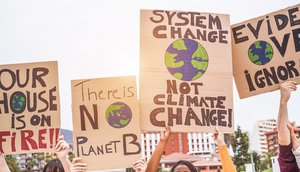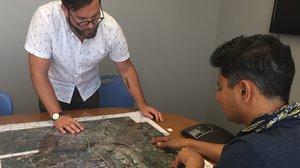Question Your World: What Does the New Federal Climate Report Say?
While some of us were out burning off those Thanksgiving calories on Black Friday, a team of more than 300 federal and non-federal science experts released a volunteer-coordinated, government-mandated assessment of the impacts of climate change on the United States.

Question Your World: Will Climate Change Be a Part of Future Elections?
Elections are opportunities we citizens have to voice our opinion on topics. Our changing climate has impacts on agriculture, real estate, city planning, human health, and beyond.

Question Your World: How Do Cities Handle Heat?
As our population grows, we will need more and more places for us humans to do our human things. This means, as we grow, we tend to convert natural spaces into developed areas. An urban environment is quite different from a natural landscape and thus has its own variables and concerns.

Question Your World: Why Are Virginia Scientists Planting African Crops?
Humans have transplanted crops all over the globe and have ushered in the era of modern agriculture, but what happens when the environment for specific crops changes?

Question Your World: How Are Ants Reacting to Climate Change?
What insect is about as old as the dinosaurs, lives on every non-frozen continent, and might be able to tell us about how species could adapt to our planet’s changing climate? Let’s talk about those little social creatures: ants.
